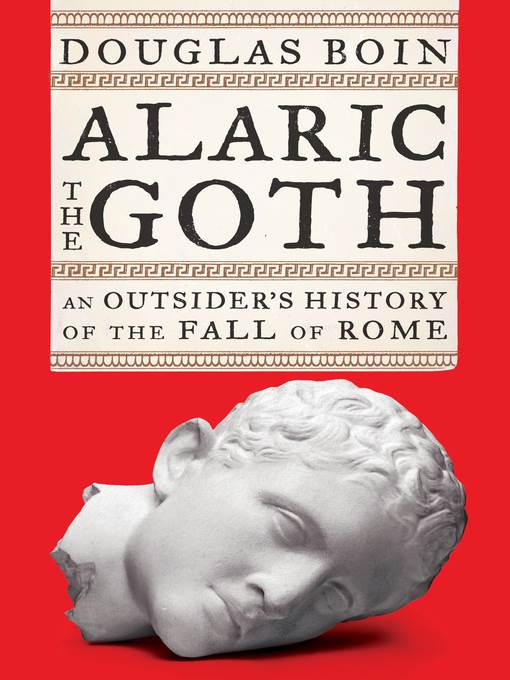
Alaric the Goth
An Outsider's History of the Fall of Rome
کتاب های مرتبط
- اطلاعات
- نقد و بررسی
- دیدگاه کاربران
نقد و بررسی

March 1, 2020
A fresh look at a little-known corner of the history of the Roman Empire. Alaric, born around 370 C.E., led an army that sacked Rome in 410; this expert history describes his life but mostly his times. Boin, a professor of history and the author of Coming Out Christian in the Roman World, emphasizes that Rome's "decline and fall" was a concept invented by later historians. No fourth- or fifth-century Roman believed the empire was "falling" even though times were difficult. Almost nothing is known of Alaric's early life, and only a few historians, not all of whom were contemporaries, recorded his later accomplishments, most of which were military actions. Alaric was born into a Gothic tribe that, a few years later, under pressure from Huns invading from the north, migrated into Roman territory. As recent immigrants, they were denied the benefits of Roman citizenship, which caused resentment as well as economic hardship. By the second century, Romans had lost interest in most military matters, so the army had become dependent on "barbarians." Alaric enlisted as a young man and quickly rose to high rank. Around 395, having won an important victory, he quit the emperor's service, apparently frustrated at being denied promotion, and was elected ruler of his tribe (later known as Visigoths). For the remainder of his life, he fought against Rome, invaded and plundered Greece, and laid siege to Rome three times. Twice, he was bought off, but the third attack resulted in the sack, during which his men plundered but (rare for the time) did not massacre the citizens. A few months later, as his army and tribe wandered Italy, he died. Although Alaric never comes fully to life as an individual, Boin delivers a revealing account of the late Roman empire, which was misgoverned, retreating from its frontier provinces, and almost perpetually at war but still certain it was the epitome of civilization. An admirable history of a lesser-known Roman era.
COPYRIGHT(2020) Kirkus Reviews, ALL RIGHTS RESERVED.

April 27, 2020
In this eye-opening revisionist history, St. Louis University historian Boin (Coming Out Christian in the Roman World) recounts the life and times of Alaric, the Gothic ruler who sacked Rome in 410 CE after laying siege to the city on two previous occasions. According to Boin, the Goths, a Germanic people from present-day Romania and Ukraine, saw their status as Roman citizens disappear in the fourth and fifth centuries due to territorial losses and the adoption and cementing of Christianity as the empire’s sole religion. Drawing on contemporaneous and early medieval records, Boin chronicles Alaric’s transformation from loyal general in the Roman army to disillusioned enemy of the state, and stresses that Goth invaders treated Romans humanely when they finally penetrated the city. Taking issue with depictions of Alaric and the Goths as violent barbarians in histories by Edward Gibbon and Rodolfo Lanciani, Boin discusses how the term Gothic has been erroneously appropriated over the centuries to describe anything “weird” and “scary.” His brisk and well-documented account reveals the Roman Empire 50 years before its collapse as a decadent society rife with xenophobia and political conflict. This invigorating rehash of ancient times speaks clearly to the modern world.

May 1, 2020
Though at one time a soldier in the Roman army, Alaric the Goth's (370 BCE-410 CE) repeated dismissive treatment by the ruling emperors in spite of his military successes shifted his loyalties back to his Gothic kinsmen. By 395, he had become leader of the Visigoths and led several invasions of the Empire, eventually sacking the city of Rome for three days in 410. Boin (history, Saint Louis Univ.) lays out the known facts of Alaric's life clearly, but the paucity of contemporary records about him unfortunately impinges some of the book's effectiveness as a biography; the parallels Boin draws to current-day issues by examining Roman attitudes toward Gothic immigrants are effective, but the positioning of Alaric specifically as an immigrant child torn from his parents by Rome's border policies stumbles given the amount of mights and maybes that Boin must hedge his statements with. More compelling is Boin's overall presentation of the Roman Empire in the third and fourth centuries: a declining civilization facing turmoil from within and without, reliant for military strength on the very "barbarians" it disdained. VERDICT A serviceable study of Alaric himself, but more valuable as a resource offering a look at the Roman Empire midway through its fall.--Kathleen McCallister, William & Mary Libs., Williamsburg, VA
Copyright 2020 Library Journal, LLC Used with permission.

May 15, 2020
Alaric was born during a time of unrest, when Gothic families crossed the Danube River to escape violence and crime only to have their children stolen and sold into slavery or eventually murdered in the name of preserving peace. Historian Boin stops short of directly comparing the ancient past and the present in descriptions about fear of immigrants and policing borders, but the parallels are apparent. Also clear is the scantiness of surviving detail about Alaric's life. Without his thoughts having survived, the subtitle, An Outsider's History, feels more aptly applied to sixth century, medieval, and eighteenth-century historians who used Alaric's deeds to bolster their criticisms of Rome as well as the modern reader peering at a world so far apart but not so unlike our own, in which bigotry, inequity, and hedonism war with ideas of inclusion, freedom, and equal aspirations for all. Anyone who appreciates vividly detailed stories of the past or is morbidly curious about the dying days of a wealthy, self-important, diverse, autocratic global power should pick this up.(Reprinted with permission of Booklist, copyright 2020, American Library Association.)

























دیدگاه کاربران